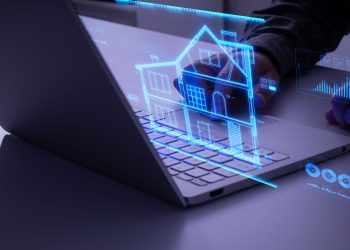There are many ways for real estate professionals to present their listings. With the rise in technology over the past few years, the impact of the pandemic plus the rate at which millennials and Gen Z homebuyers are entering the market, it has become more important than ever to showcase your properties the right way…especially in a digital space.
When you land a new listing, there are many steps you can take to ensure the property gets views, clicks and, ultimately, the interest of potential buyers. In addition to property history, market information and an enticing listing description, high-quality listing photos of the property, inside and out, are a must. But what makes a strong listing photo? The answer: staging.
Staging a home for listing photos is a smart strategy to give prospective buyers a look into what their lives could potentially look like inside a home. However, staging isn’t always easy. It often depends on what furniture, artwork and details sellers already have, plus budget, in case you need rental furniture, artwork and other elements. And if the seller has outdated furniture or personalized artwork throughout the space, staging can be tough, as you don’t want to market a home that doesn’t look enticing or that keeps potential buyers at bay.
Having an unfurnished, open space for virtual staging also allows potential buyers to see the bare space with no clutter, as well as the many ways to utilize, decorate and furnish it, as well as the potential for remodeling, reflooring, repainting and so much more. It’s important to note, for both agents and their clients, that virtual staging is not used to make potential buyers believe a property is in perfect condition when it isn’t or to misrepresent the space, but rather, to showcase the home’s full potential. Be sure to label any virtually staged listing photo as such, and provide the original photos for comparison.
Check out the National Association of REALTORS®’ (NAR) 2023 Code of Ethics & Standards of Practice, Article 12 and the Real Estate Staging Association (RESA) Code of Ethics and Professional Conduct for more information.
According to NAR’s 2021 Profile of Home Staging, 47% of buyer’s agents cited that home staging had an effect on buyers’ view of a home, and 82% said that staging a home made it easier for a buyer to visualize the property as a future home. From the seller’s agent perspective, 23% reported an increase of 1% to 5% of the dollar value offered by buyers, in comparison to similar homes without staging.
In today’s current market, home staging is undergoing a transformation. New tools and technology have made it possible for real estate professionals to create endless listing photos to appeal to a wide range of buyers through virtual staging. Virtual staging is quickly becoming the go-to for many listing agents due to the fact that it’s convenient, affordable and flexible. Plus, it can help with timetables for both buyers and sellers.
 Mary Kate Klemish-Boehm, a REALTOR® at Brown Harris Stevens with nearly 14 years of experience and a creative passion for design, spoke with RISMedia, offering insights on virtual staging in today’s real estate market. She also shared a recent listing, complete with virtually staged photos, and her strategies for highlighting a property’s best features.
Mary Kate Klemish-Boehm, a REALTOR® at Brown Harris Stevens with nearly 14 years of experience and a creative passion for design, spoke with RISMedia, offering insights on virtual staging in today’s real estate market. She also shared a recent listing, complete with virtually staged photos, and her strategies for highlighting a property’s best features.
“Virtual staging, especially in today’s digital world, really enhances the buyer’s experience and gets a lot of attention,” says Klemish-Boehm.
“For a lot of buyers, it can be hard to envision what a property can transform into and look like,” she continues. “Many buyers want a turnkey property, so when you don’t have one, it can be a stumbling block. What you can do is try and give a little enhancement to the home so people can envision the true potential of a property.”
On the seller’s side of things, virtual staging can help in many situations, from age and mobility to simply not having the funds or budget to make updates or renovations before listing.
For agents, virtual staging can help your listings stand out among the competition, get more views and, ultimately, find the perfect buyer.
“Traditionally, if there is a lot of inventory, you want to stand out,” says Klemish-Boehm.
“In this market, with inventory still at historic lows, you don’t necessarily have to do as much because there is so much demand for homes.”
“But again,” she continues, “a lot of buyers want turnkey properties, so by being able to give them a vision of what they can do, a buyer who might have passed on going to see the listing may then go and check it out in person.”
This can also be an opportunity for agents to showcase their local expertise, highlighting relationships with industry vendors and local businesses. If a buyer is interested in a property based on the virtually staged photos, and is looking for services to complete these renovations, agents can, and should, offer up their connections—and that is exactly what Klemish-Boehm does.
“As a buyer’s agent, I have a whole Rolodex of contractors, painters, plumbers, electricians, interior designers, etc., that I’ve worked with or have had clients work with,” she says. “I have relationships with them where I can go ahead and pass my buyer’s names along for any services they may be interested in.”
Pro Tip: “I print out my virtually staged photos to have onsite when I am hosting an open house or a showing so that when they are standing in the room, they can imagine how it would look.” -Mary Kate Klemish-Boehm
Klemish-Boehm virtually staged a recent listing in Norwalk, Connecticut, showcasing the potential of the property using a simple, yet stylish color scheme and on-trend furnishings and decor to enhance the home’s existing features.
“This home was built in 1960, and there have been updates made over the years, but not in recent years,” she explains. “The sellers were open to virtual staging because, even though they love the home, they recognized that a buyer coming in would want to make updates. They were really happy because they didn’t have to go ahead and do all of that work.”
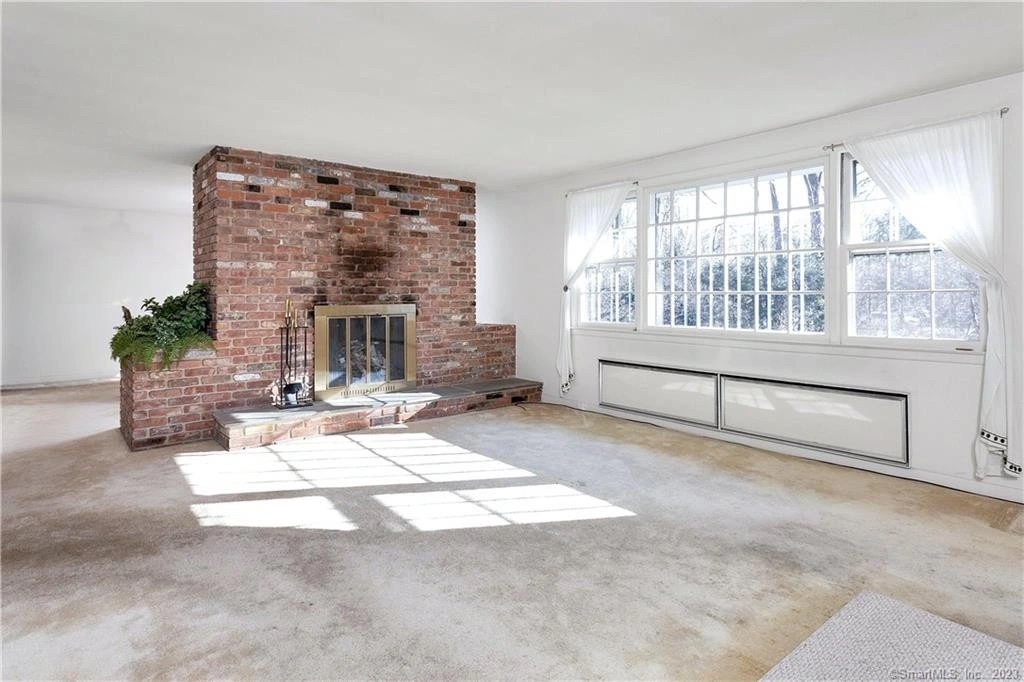
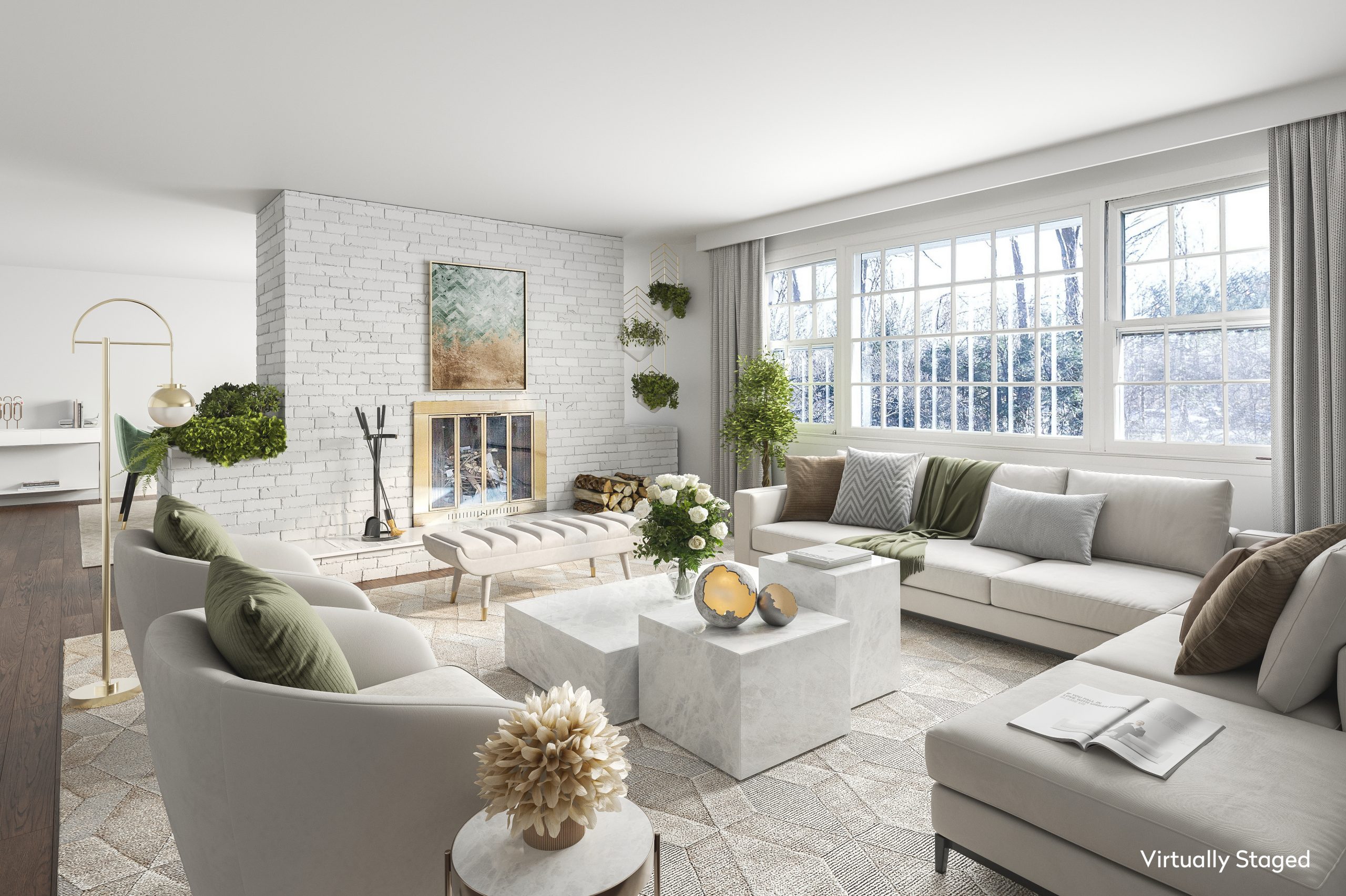 “The fireplace was so important in this room, so that was the starting point of my virtual staging. If you look at the original photo, there are some green plants. Working with that color to pull it through the rooms with the white walls and brick helped keep it light, bright and fresh.”
“The fireplace was so important in this room, so that was the starting point of my virtual staging. If you look at the original photo, there are some green plants. Working with that color to pull it through the rooms with the white walls and brick helped keep it light, bright and fresh.”
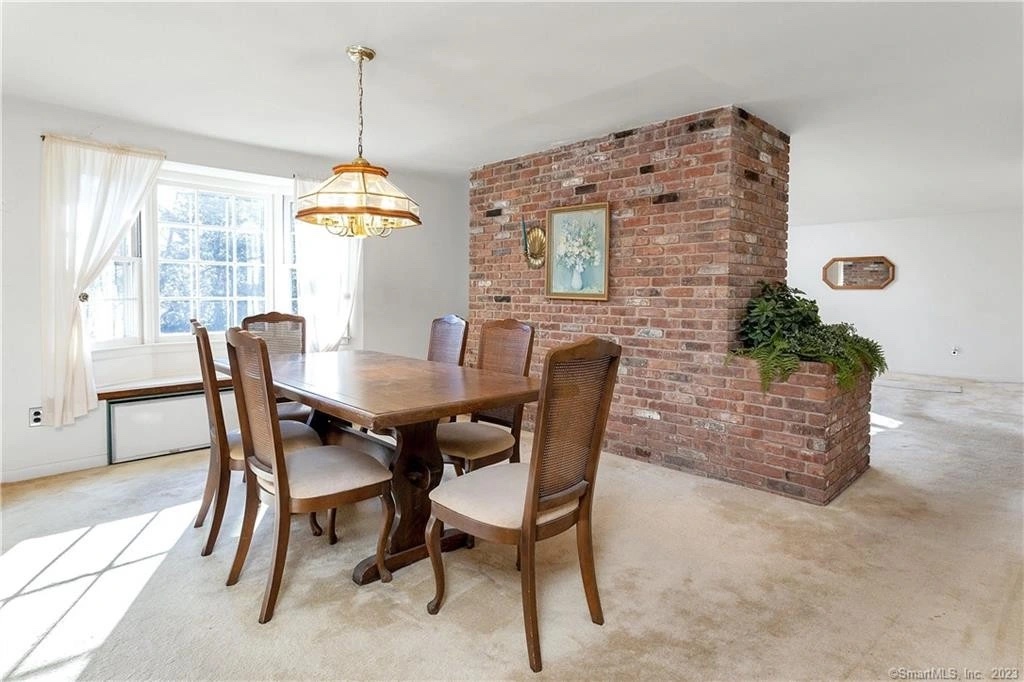
 “For this property, I specifically wanted to white wash the brick,” Klemish-Boehm explains. “I specifically wanted transitional furniture, nothing too classic or modern because it has to fit the style of the house.”
“For this property, I specifically wanted to white wash the brick,” Klemish-Boehm explains. “I specifically wanted transitional furniture, nothing too classic or modern because it has to fit the style of the house.”
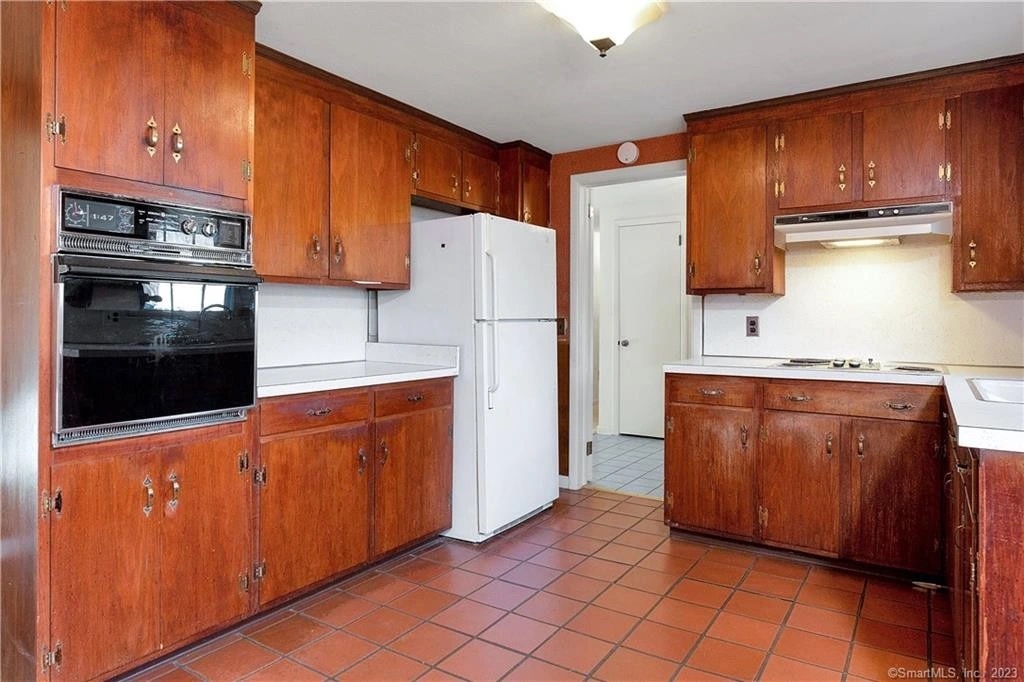
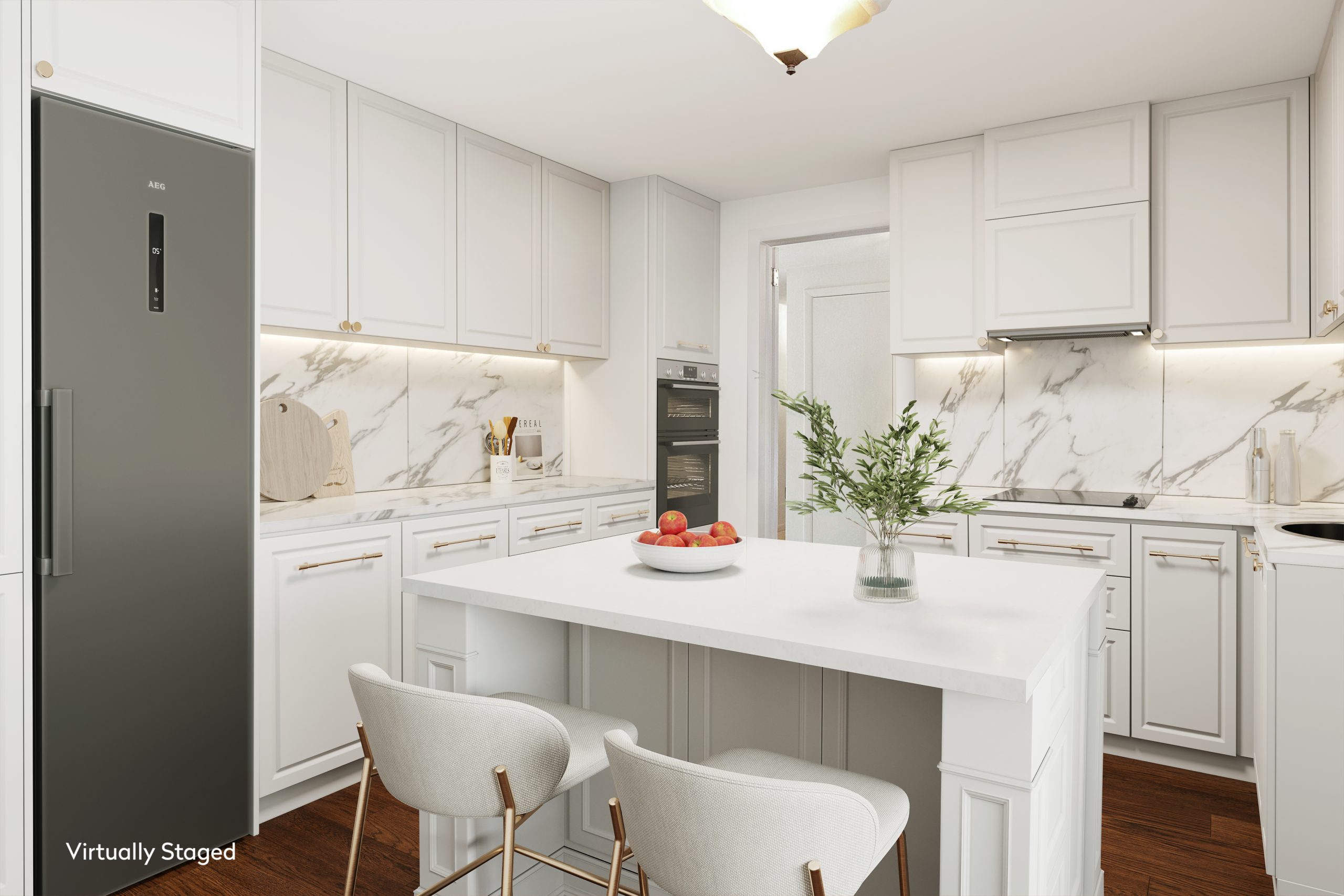 “The kitchen is obviously a major renovation, but if you look at the living room and dining room, there’s hardwood floors underneath the wall-to-wall carpet. This is just some refinishing of the floors, paint, a new light fixture for the dining room and furnishings.”
“The kitchen is obviously a major renovation, but if you look at the living room and dining room, there’s hardwood floors underneath the wall-to-wall carpet. This is just some refinishing of the floors, paint, a new light fixture for the dining room and furnishings.”
Finding the right look for a space when virtually staging is also important, and considering the style and design elements of the property is the best place to start.
“It’s a matter of thinking about the property itself, and if there is anything that you specifically want to enhance about the room that you are virtual staging, finding something you want to enhance and honing in on that to tie it together,” says Klemish-Boehm. “Find the feature that you want to enhance, look at what the current design trends are, and know who your audience is for the house.”
Virtual staging is becoming more and more popular on both sides of the real estate lens. For buyers, the process offers a look into the potential of a property, providing an opportunity to envision it. For sellers, it offers an opportunity to sell their home without spending money on renovations, updates or traditional staging methods. For agents, virtual staging can help both you and your listings stand apart from the competition.
By following the correct industry guidelines, utilizing your creativity and knowledge of trends, and understanding your market and audience, you can leverage virtual staging for your listings throughout 2023 and beyond.





